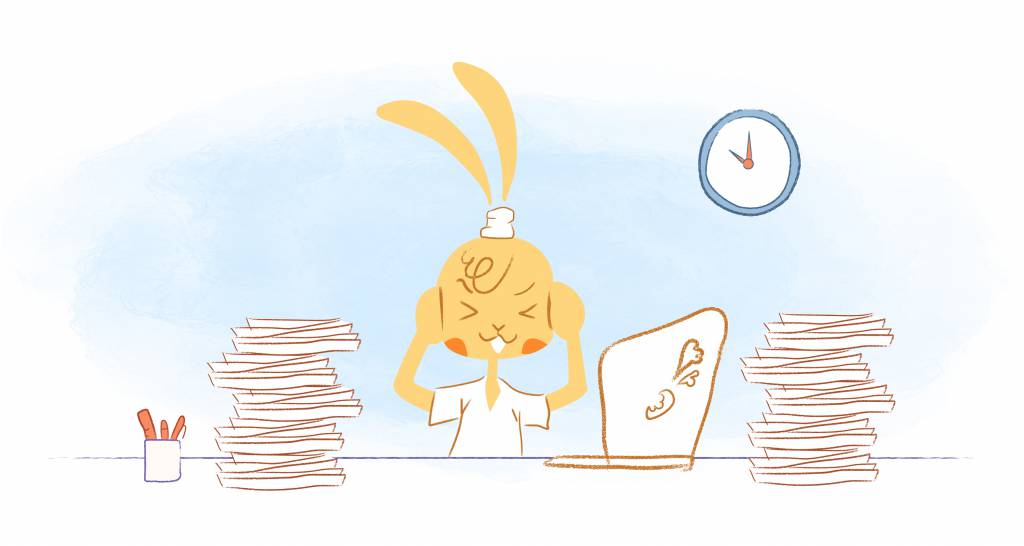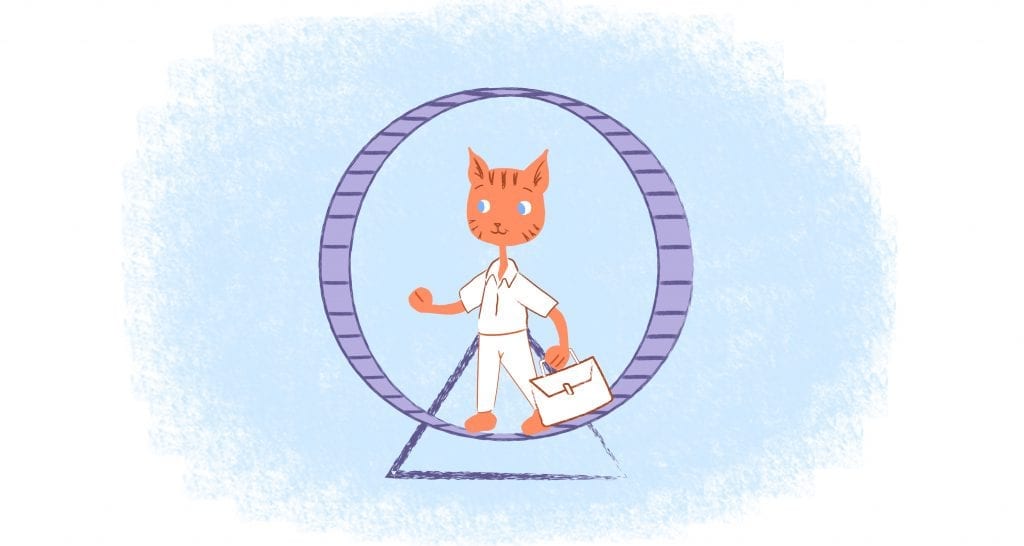

As I’m trying to write this article, my neighbor is methodically running his leaf blower. The background noise is intrusive and interesting with my flow. But, this noise pollution is just one of many distractions we’ve had to overcome while working from home.
Returning back to the office may be on tap for many — or you may still be juggling Zoom meetings with preschoolers hanging around. Some may have difficulty focusing when working from home as there are dishes that need to be cleaned. And who really wants to work when there are so many shows and movies calling your name on Netflix?
After Work Transitions When Working From Home
Overall, I think that most of us have been able to manage these abstractions when we had the COVID-19 in full swing — and we were still able to be productive. But, the biggest challenge that I’m still struggling with is overworking. Despite the previous misconception overworking is actually something that many of us are facing.
Unlike leaving home and going to a different location, there’s no longer that separation between work and home. That same table that you eat dinner at is also your work desk. You’re also responding to messages all day and night.
Moreover, you’re putting on one hat after another. Case in point, you just wrapped up a video call. Now, you have to immediately be a parent, teacher, chef, dog walker, and so forth.
While certainly overwhelming, there is a quick fix. And, it’s called a transition ritual.
What is a transition ritual?
“A transition ritual is a simple practice of taking a moment, a break, between appointments, tasks, or any other shifts in the day to more easily and more mindfully move from one to the next,” explains Anne Claire Woods, MA, CCLS, LPC. “It could be breathing, listening to a song, taking a coffee or water break, meditating on a word, anything that allows your brain and body to rest for a moment, more calmly transitioning to the next.”
For instance, before work, you may recite affirmations or listen to a playlist to get you amped. After completing a task, you may stretch or go for a walk. And, in the middle of the day, you take a much-deserved lunch break to refuel.
But what about the end of the day? Well, you can use the following 10 transitions to help you seamlessly move between work and home. When you do, you’ll be able to set boundaries so that you can actually rest, recharge, and maintain a healthy separation between the various spheres of life.
1. Set up a wrap-up routine.
“To make sure you can be fully off-the-clock later in the evening, have a wrap-up routine that you start at least 30 minutes before you need to end work,” suggests Elizabeth Grace Saunders for HBR. For example, you could conduct “a final check to make sure that all critical emails have a response.” You could also glance “over your task list to know that you have completed what’s essential.”
For me, this creates a feeling of accomplishment at the end of the day. It also gives me a reason to celebrate after a long day. More importantly, this encourages me to prioritize my lists to ensure that they get completed.
Another benefit? If you have to go back to work later at night, this can help you “decide on exactly what you will complete and when.”
Let’s say that determine, “I will review this proposal for an hour or less starting at 8 PM.” Making such a specific statement prevents you from having “a cloud over your head all evening that you should probably do some work without a clear sense of exactly what you will do and when.” adds Grace Saunders. “You can mentally disconnect until 8 PM and then also feel free to completely stop at 9 PM. when the objective and the time frame are clear.”
Some other ideas would be to:
- List what you want to accomplish tomorrow.
- Review tomorrow’s calendar.
- Clean up your workspace.
- Tie up any loose ends, like sending out quick emails.
- Check out with employees. For instance, ending the day on a high note by highlighting a team member’s accomplishment.
- Do a brain dump by writing any work-related on your mind down onto paper.
2. Turn everything off.
After you’ve done the above, go ahead and turn off your computer and/or laptop. I know that this will give some of your anxiety. But it’s the best way to fight back against always being on.
What’s more, it’s a simple way to signal that you’ve come to the end of your workday. But, what if you’re worried about missing anything important? Chances are it can wait until tomorrow, but if it’s a real emergency, there are ways to contact you.
If possible, you should mute all of your work apps on your smartphone. Again, what messages you receive aren’t urgent enough to worry about after work. You may even want to even remove certain apps altogether or revert back to a flip phone.
3. Set an evening intention.
At this point, anything that’s work-related should already be behind you. But, to really help you move on, you should establish your intentions for the evening.
You don’t want to overwhelm yourself here. Just think of one or two activities that you want to do tonight. For instance, you could make the post-work declaration to be the best parent possible or learning a new word in Spanish.
4. Listen to an audiobook or podcast.
While there are days that I definitely don’t miss commuting, I did enjoy it occasionally. Personally, I cherished the alone time to reflect or catch-up on books or podcasts. In fact, listening to these types of mediums stretches the imagination, improves listening skills, and promotes learning.
Moreover, this was the perfect transition from work to home. Why? Because it encouraged me to focus on something besides work.
While commuting isn’t as prevalent these days, you can still partake in this activity. For me, after setting my evening intention, I turn on a podcast and take my dog for a long walk.
5. Take a walk.
Speaking of walking, this is one of the most popular shutdown rituals you can do. After all, walking has been found to:
- Improve your mood.
- Burn calories and lose weight.
- Reduce chronic diseases like diabetes and stroke.
- Improves your digestion.
- Makes other goals seem attainable.
- Sparks creativity.
- Alleviates joint pain.
- Improves your immunity.
- Reduces stress.
- Boosts the effects of melatonin, which will improve the quality of your sleep.
Ideally, this would be when it’s pleasant outside. But, to be honest, I don’t mind walking in the colder months. They might not be as long, but these walks can be exhilarating.
6. Break a sweat.
There’s nothing wrong with a morning workout. In fact, science has found those morning workouts are best for burning fat and losing weight. Also, it gets the blood flowing to help energize you for the day.
At the same time, afternoon and evening workouts are almost just as good. For instance, physical activity between 1 pm and 4 pm can give you performance. And, exercising at night can help relieve stress.
Preferably, if you can squeeze in a workout between 5 pm and 6 pm, you get the best of both worlds. Whether if it’s through yoga or on your Peloton, an after-work workout is a perfect way to destress and raise your spirits.
7. Learn the German word, Feierabend.
“In Germany, the Feierabend is a daily evening celebration marking the moment when work is switched off for the day–often accompanied by a hearty German beer,” explains HBR’s Ashley Whillans. “Whether you finish the day with a beverage, a snack, going for a run, or calling a friend, find a ritual that can mark the end of your workday and give you something to look forward to.”
“These daily routines help you celebrate what you have accomplished during the day (rather than focusing on what still needs to be done), bringing life meaning and happiness,” adds Whillans. In short, whatever you chose, the idea is that you find something enjoyable to do after work. When you do this, you’ll have a clean disconnection between work and home.
8. Change your environment.
Now that you’re done with your Zoom meeting and work responsibilities, swap out your professional clothes for something more comfortable. I mean is there anything comfier and relaxing like a broken-in hoodie and pair of sweats?
Even if you have a dedicated workspace somewhere else in your home, you might want to change your environment. Perhaps dim the lights, put on a chillaxing playlist, and light some candles to inspire you to relax and unwind.
9. Cook dinner.
Let’s get the obvious out of the way. Cooking at home is definitely healthier and more cost-effective than ordering takeout. And, if I’m upfront, the pandemic has made me want to limit the time I spend in public spaces.
However, there are some additional benefits of cooking. One is that it can connect you to others. For example, I’ve talked to my mom and siblings during the crisis have we share recipes with one another. But, it’s also the perfect way to relax after work.
“The actual act of cooking can be so therapeutic because it involves things like rhythmic chopping or stirring,” says certified eating psychology and nutrition expert Elise Museles. “And at the end of it, you have this delicious meal, which is hugely rewarding, so there’s a sense of accomplishment, too.”
And it’s an act of self-love. “You’re not saying, ‘I’m too busy.’ You’re saying, ‘I’m prioritizing my health and myself,” adds Museles.
10. Cross an item off your household chore.
Finally, knock out a household chore or honey-do list. It could be something as simple as folding laundry, washing dishes, taking out the trash, or running errands. As an added perk, this also prevents household chores from distracting you during “business” hours since they have already been attended to.
Image Credit: jennifer murray; pexels; thank you!











Howie Jones
My name is Howie and I'm a Customer Success Manager at Calendar. I like to ensure our customers get the best experience using our product. If you have questions email me howie at calendar.com